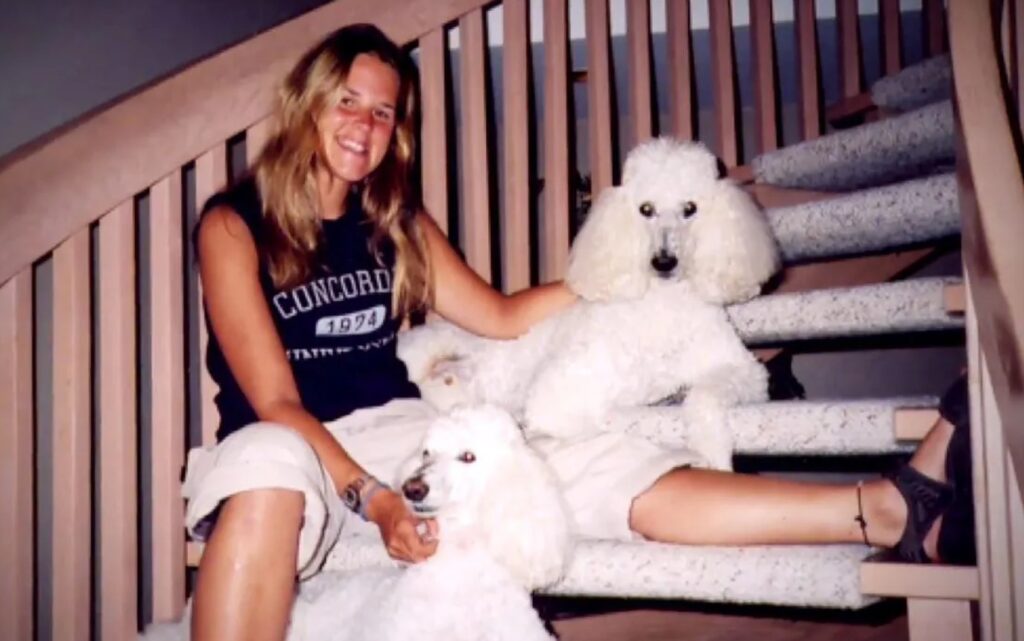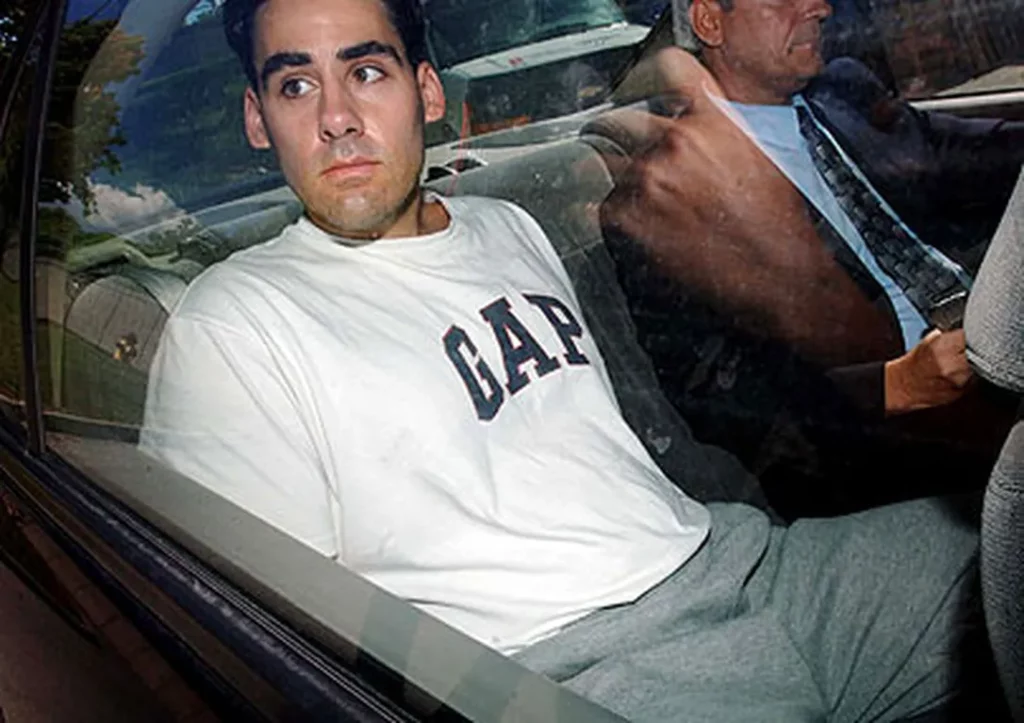A young woman said goodnight to her boyfriend and was never seen again. Her disappearance launched one of the largest searches in Ontario history, one that ended in a shocking twist that rattled the community.
Episode Media




Episode Sources
- Alicia Ross – Wikipedia
- Alicia Ross: Everyone’s daughter
- Alicia Ross – Chilling Crimes
- Alicia Ross Case: The Timeline
- Alicia Ross’ mom says death has torn family apart
- Hundreds expected at Ross funeral Friday
- Boyfriend unwelcome at funeral
- Alicia Ross laid to rest
- Jury Selection Begins In Alicia Ross Murder Trial
- Trial to begin Monday in Alicia Ross killing
- Sylvester cries during videotaped police interview
- ‘I should never have been born’
- Motive In Alicia Ross Murder Revealed: “She Called Me A Loser”
- `She died in my hands’
- Sylvester didn’t intend to kill Ross: psychiatrist
- Ross death ‘not a whodunnit,’ Crown says
- Judge instructs Ross jury
- Jury finds neighbour guilty in Alicia Ross murder
- Neighbour guilty of 2nd-degree murder in death of Alicia Ross
- Beneath a polished mask, a cold-hearted killer
- Alicia Ross Memorial Fund for Youth — PROJECT CANOE
Episode Transcript
Welcome back to Bite-Sized Crime. This week I’m bringing you a story from Canada, a case that sparked one of the largest missing person searches in Ontario history. This episode includes graphic descriptions of violence, so listener discretion is advised.
Alicia Ross was born in 1980 in Markham, Ontario, about 20 miles outside of Toronto. As an infant, Alicia was adopted by Marvin and Sharon Ross, who absolutely adored the blue-eyed, blonde-haired little girl. Alicia was a happy and playful child, and even after Marvin and Sharon separated, the family remained close, spending time together whenever possible.
Alicia grew into a bright, adventurous young woman. She loved the outdoors and was especially fond of canoeing, something she often did in the parks and waterways around Lake Ontario. She volunteered at a local camp, teaching kids how to canoe.
By her mid-twenties, Alicia was thriving. She was working in sales at Hewlett Packard, a tech company with its Canadian headquarters in nearby Mississauga, and she had her own living space in the basement of her mother and stepfather’s house. The renovated apartment was perfect for a young professional – Alicia had her own separate entrance, giving her privacy while also allowing her to stay close to her family.
In August of 2005, 25-year-old Alicia had a great job, a comfortable apartment, and a new boyfriend. Everything was going well in her life – her mother had never seen her so happy.
On the evening of August 16th, Alicia and Sharon took the family dogs out for a walk after work. Alicia was excited – she had just found out that she was getting a promotion at work, which would be announced the next day. Sharon wasn’t surprised; Alicia was a hard worker and deserved this recognition.
Later that evening, Alicia’s boyfriend, 29-year-old Sean Hine, came over to the house to celebrate the good news. Alicia and Sean had been dating for almost two months, and things seemed to be going well. The couple hung out in the basement apartment that night and played a few rounds of pool. At one point, Sharon came downstairs to borrow a purse from Alicia; she chatted with Alicia and Sean for a bit before heading back up to the main house for bed.
At midnight, Sean decided it was time for him to go home as well. Alicia walked him out to his car, kissed him goodbye, then walked back towards the house. When he got home about 15 minutes later, Sean called Alicia’s cell phone to say goodnight, but she didn’t answer. He figured she must have already fallen asleep. But when he tried to call her again at 10:00 the next morning, she still didn’t answer. Even when she was at work, Alicia always answered her phone.
Sean waited a few hours to see if she would call him back, but eventually he decided to drive back over to Alicia’s house to make sure she was okay. When he got there, he was surprised to find her car in the driveway – maybe she had overslept, or maybe she had called out sick from work. He knocked on her apartment door, but there was no answer.
His concern growing, Sean looked around outside the apartment. He noticed that the gate to the backyard had been left open, and lying haphazardly in the grass were a cigarette, an empty glass, and a pair of Alicia’s shoes.
Sean did the only thing he could think of to do – he called 911. He told the dispatcher that Alicia wasn’t responding to calls and that she wasn’t answering the door even though her car was in the driveway. He then called Alicia’s mom, who immediately rushed home from work.
Sharon arrived to find the house swarming with police officers. When they entered the basement apartment, it became clear that Alicia wasn’t there. But the scene was unsettling. Alicia’s ring was sitting by the bathroom sink as if she had been getting ready for bed. Her laundry was folded and her bed was still neatly made. Her purse, cell phone, cigarettes, and keys were on the table. It was as if she had simply vanished.
Over the next few days, search teams scoured the area around the family’s Markham home. K-9 units were deployed to cover as much ground as possible, and police helicopters circled the city. Hundreds of volunteers showed up to help with the search – so many that the police had to turn some away. The search was so large that it was profiled on the television show America’s Most Wanted.
Sharon went on the local news and delivered a tearful message to her daughter. “Alicia, I have never broken a promise to you, and I promise you, you will come home soon.”
But after six days of searching, there was still no sign of Alicia.
On August 22nd, police decided to scale back the search. Inspector Tom Carrique with the York Regional Police stated, “Although there is no evidence to suggest foul play… we are concentrating on the possibility that foul play may exist and be responsible for her disappearance.” Inspector Carrique also insisted that Alicia’s boyfriend Sean Hine was not a suspect. “He’s a witness that potentially has valuable information for us.”
However, the public was not so quick to dismiss the boyfriend. Sean was the last person to see Alicia on the night she disappeared, so naturally he came under suspicion. The stress of public scrutiny was hard on Sean; shortly after Alicia’s disappearance, he was arrested for drunk driving, a fact that didn’t help his reputation.
Although Sean wasn’t an official suspect, investigators did consider him a person of interest. They spoke with Sean’s neighbors, asking if they had seen any suspicious behavior, such as Sean taking out the trash at odd times. They even searched his cottage in Haliburton, several hours north of Markham. But nothing seemed to indicate that Sean had been involved in Alicia’s disappearance.
On August 25th, police announced that they believed Alicia Ross was not just a missing person, but that she had been abducted, likely by someone she knew. They set up a dedicated hotline and asked the public to call in with tips, but out of the hundreds of calls that came in, none amounted to anything useful in the case.
As the weeks passed, investigators continued to explore every possible lead. Sharon once again went to the media, begging for her daughter’s return. “I would give my life just to have her come home. I’m not even looking for punishment, you know? I don’t wish harm to anyone. Just her return. That’s all I want.”
On September 20, 2005, a month after Alicia’s disappearance, a man walked into the York Regional Police Headquarters and made a stunning confession: he had killed Alicia Ross.
The man was 31-year-old Daniel Sylvester, Alicia’s next door neighbor. With his lawyer present, Daniel told investigators what happened in the early morning hours of August 17th.
According to Daniel, he ran into Alicia in the small alleyway between their houses around 1:30 that morning. Alicia confronted him, asking him what he was doing out there, and Daniel replied that he had as much right to be outside as she did. They argued, and Alicia called Daniel a “loser”. In Daniel’s own words, he “lost it.”
Daniel slapped Alicia, which resulted in a scuffle. He wrestled her to the ground and began beating her as she struggled against him, grabbing at his hair and trying to kick him in the ribs. Enraged, Daniel drove his knee into her chest and slammed her head into the pavement over and over again. When he finally regained control, he realized Alicia was dead.
In the recorded interview with police, Daniel reenacted the scene for detectives, getting down on the floor of the interrogation room and demonstrating how he pinned Alicia down. “She wasn’t breathing. She stopped struggling. She just lay there… I panicked… I didn’t know what to do… I knew I was in serious trouble.”
After that, Daniel said he left Alicia’s body lying in the grass for several minutes while he tried to figure out what to do. Then he dragged her body across the yard and into his garage before going back outside to wash the blood off the pathway with the garden hose. When he finished, he lined the trunk of his mother’s car with cardboard and laid Alicia’s body on top, wrapping her head with rags and duct tape to stop the flow of blood. He removed her clothes and his, placing everything in trash bags before going inside to shower. Then, around 5AM, Daniel drove Alicia’s body north, dumping her in a marshy area near the small town of Manilla. He also discarded the trash bags with their blooding clothing, unaware that he had also thrown away his wallet with his driver’s license and bank cards inside. Daniel admitted that he had returned to the site multiple times to try and recover his belongings, but he wasn’t able to find them.
In his statement to police, Daniel also said that a few weeks after he killed Alicia, he went back to Manilla to move her body, afraid that she would be discovered. By this time, Alicia’s remains were in an advanced state of decomposition, making his task much more difficult. Daniel said that he gathered up as much of the remains as he could, covering everything with a tarp in the back of his pick-up truck. He then drove even farther north to Coboconk, a tiny logging town on the tip of Balsam Lake. There, he once again disposed of Alicia’s remains.
At one point in the recorded interview, a detective asked Daniel, “Do you understand the events you’re under arrest for?” and Daniel responded, “Murder.”
Daniel Sylvester led investigators to the location of Alicia’s remains. Due to the level of decomposition, the medical examiner could not determine a cause of death, but reports indicated that at least 30 of Alicia’s bones had been fractured, including most of her ribs.
York Regional Police announced that they had recovered the body of Alicia Ross and that 31-year-old Daniel Sylvester was being charged with second-degree murder. The community was rattled; this news had seemingly come out of the blue. A reporter for the Edmonton Sun wrote, “With public suspicions firmly focused on Sean Hine, Alicia’s boyfriend and the last known person to have seen her before she disappeared, the news that her next-door neighbour, an enigmatic and little-known character on his own street, had been arrested shocked the city.”
And it was a shock. Daniel Sylvester was rarely seen around the neighborhood; Alicia’s mom Sharon said she had only seen him a few times in the years they had lived next door, and they had never interacted. The family had no idea that their neighbor was capable of such a horrific act.
Alicia’s family was finally able to put her to rest on October 6, 2005. More than 500 people attended her funeral at the synagogue, mourning the loss of their beloved daughter, sister, and friend.
Although the family was able to have this small measure of closure, they would have to wait a while longer for justice.
Finally, in May of 2007, nearly two years after Alicia’s death, Daniel Sylvester stood trial for her murder. For three long weeks, a jury listened to testimonies, reviewed evidence, and watched the videotaped confession in which Daniel described Alicia’s last moments. The prosecution asserted that Daniel had been stalking Alicia, that he had intended to kill her when he began his attack.
The defense, on the other hand, portrayed Daniel as a loner on the fringes of society, someone who had suffered rejection and bullying at the hands of others his whole life. He was extremely sensitive due to his low self-esteem, and when Alicia had insulted him, he snapped. But the defense claimed that Daniel hadn’t meant to kill Alicia – things had just gotten out of hand.
Daniel’s attorneys attempted to paint him in a sympathetic light. They called his psychiatrist, Dr. Mark Ben-Aron, as a witness, and he laid out Daniel’s history of depression and anxiety, something he had been treated for since he was a young boy. Dr. Ben-Aron also detailed a history of disturbing behavior, including voyeurism, which he called “creepy and weird”.
Dr. Ben-Aron told the jury that Daniel had admitted to attacking Alicia, but that he hadn’t meant for it to be fatal. Daniel told the doctor that he didn’t want to be picked on anymore, that he just wanted to “make a statement”. Dr. Ben-Aron told the jury that Daniel showed genuine remorse for his actions. The prosecution argued that someone who felt genuine remorse did not cover up a crime and hide a body multiple times.
On May 29, 2007, after just four hours of deliberation, the jury found Daniel Sylvester guilty of second-degree murder for the death of Alicia Ross. He was given a life sentence with the possibility of parole after 16 years.
After the verdict was read, Sharon read a statement on behalf of the family, thanking the jury for their work. “The pain of our loss will never go away. It is with us every day, but you believed in the truth and delivered a verdict that now helps all of us move forward to the day when we hope memories will be of cherished, happy times, rather than painful reminders of how Alicia died.”
In the years following Alicia’s death, her family has worked hard to keep her memory alive. A memorial fund was created in Alicia’s name to help send at-risk youth on canoe trips to Algonquin Provincial Park, one of Alicia’s favorite outdoor spots.
Alicia Ross was a bright young woman with her whole life ahead of her. She fell victim to a man who could not handle rejection, who used his anger as a weapon. No matter what Alicia may or may not have said in the moment, she did not deserve the violence he inflicted upon her.
Tragically, thousands of women are victims of this type of violent behavior every year. If you or someone you know is experiencing unwanted attention or stalking behavior, please reach out for help. You can call or text the VictimConnect Resource Center at 1-855-484-2846 to receive free, confidential support and information.
